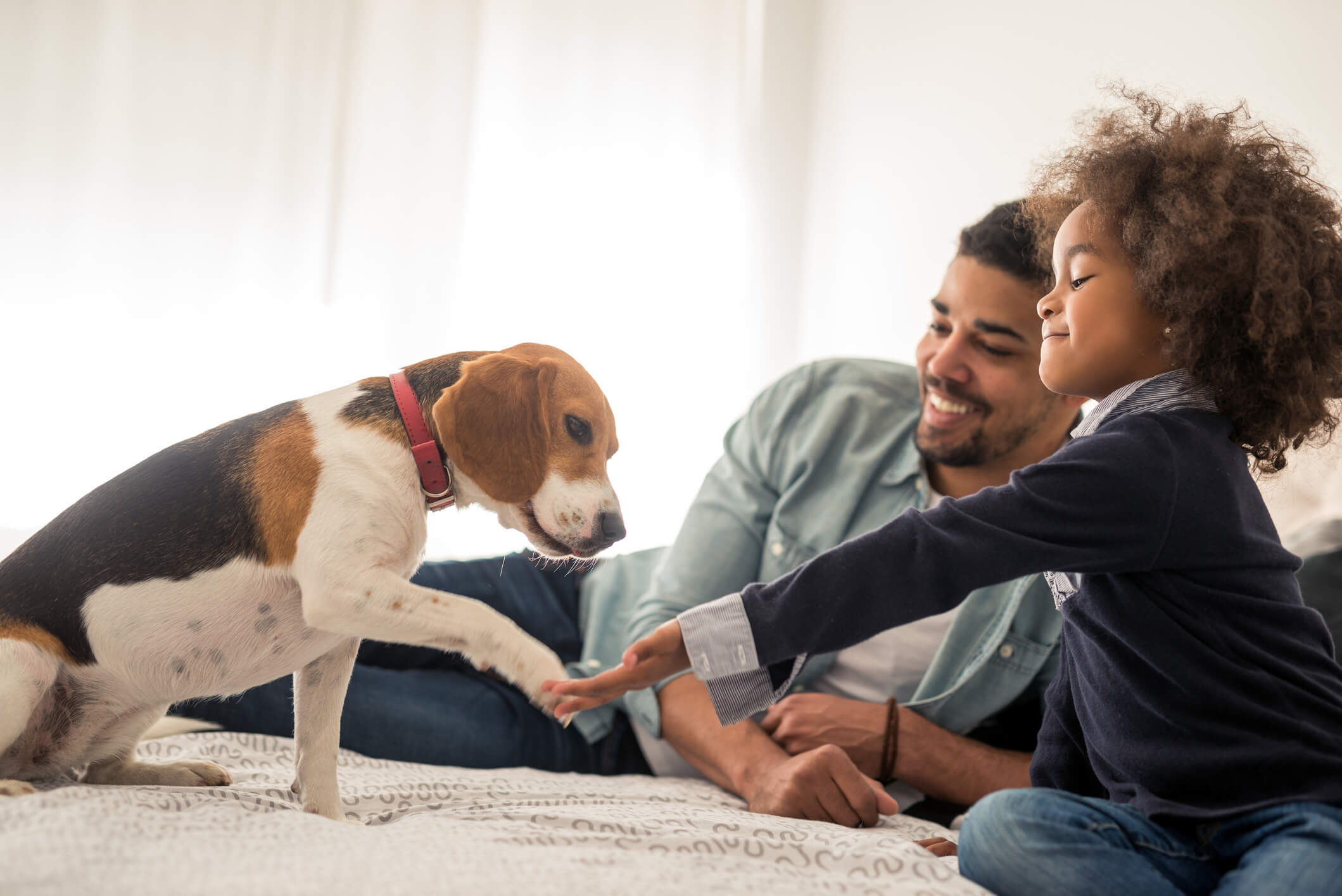
How to Introduce Your Children to Your New Dog
Dogs can bring immeasurable joy into a child’s life. They help children develop social skills and responsibility and give them a lifelong companion—not to mention pups make wonderful cuddle buddies! However, kids must remember that earning a dog’s trust and affection takes time and patience. When they learn the right way to interact with a new dog, all their diligence and hard work will be worth it in the end.
If you’re adopting a dog soon, follow these tips to make sure their introduction to your youngest family members goes smoothly.
Make sure the dog is trained first
Before kids can meet their new furry friend, the dog must be able to follow basic commands. Untrained pups are hard to wrangle if the initial meeting gets out of hand, and someone could get hurt. Help the dog master commands like sit, stay and leave it so they make a good first impression on your children.
When the dog and children do meet, command your pup to remain in a sitting position so they’re not tempted to jump and go crazy with excitement. Having your kids give the dog treats isn’t the best idea during this initial meet and greet. Treats might get your puppy riled up. Instead, reward good behavior with calm praise and pets.
Monitor the dog’s behavior
Even the most well-trained pups can become aggressive if they feel threatened. A dog can easily misinterpret your child’s excitement for danger and instinctively lash out to protect themselves. It’s not the dog or child’s fault—rather, there was a bit of miscommunication. Bad first impressions can not only result in physical harm but cause children to develop a fear of dogs and vice versa.
Stay in the room and closely monitor your new dog for signs of fear or aggression. Keep the dog on a leash at all times and be ready to intervene if you notice problems. There’s no telling how a dog will react to new people, even if you’ve spent countless hours teaching them good behavior.
A helpful technique for socializing your new pup is called the time-out method. If the dog feels overwhelmed, bring them into a separate room for several minutes. This gives the dog a chance to calm down in a quiet environment away from your children. Essentially, you’re hitting the reset button. Once your pup is calm, you can try introducing them to your kids again.

Demonstrate how to pet the dog
Kids might take one look at that adorable puppy face and let their excitement run wild. They’ll be tempted to tug on the dog’s tail, squeeze too hard or squeal with delight. The kids aren’t trying to hurt their new dog, but it can happen on accident—and the dog might hurt them back.
For both the dog and children’s safety, teach kids how to interact with dogs the right way. Slowly approach the dog without making any sudden movements. Speak in a calm, soothing voice and, after letting the dog sniff you, gently stroke their fur. Have the children meet your dog one at a time and copy your actions.
It’s equally important that kids learn to recognize aggressive body language in dogs. A child should refrain from petting if the dog show a tucked tail, flattened ears or raised fur on the back. Dogs might also growl or give a small warning nip. Let the children know that this is a dog’s way of saying they need some space.
Respect the dog’s personal space
Dogs are great for teaching respect to children. When your kids meet their new pup, ask them to remain a few feet away so that the dog can approach on their own terms. Once the dog sidles up next to them, the kids should stand still and let the dog sniff. It’s okay for kids to offer a hand, but make sure they curl in their fingers in case the dog decides to nip.
In addition to good petting manners, kids should learn when it’s acceptable to interact with a dog. Children shouldn’t disrupt a dog while they’re eating, sleeping, going to the bathroom or displaying aggressive behavior. And remember the golden rule: treat others the way you want to be treated. Kids wouldn’t appreciate waking up to someone tugging on their hair, and neither would a dog!
These steps will lay the solid foundation for a friendship between your kids and their new furry friend. Every dog needs time to adjust, but once they do, kids are free to play with and hug the pooch all they want while respecting their boundaries. After all, there’s nothing quite like witnessing a puppy and kid grow up together!


